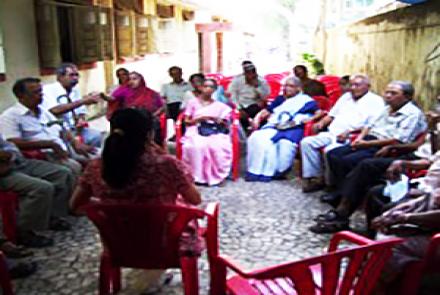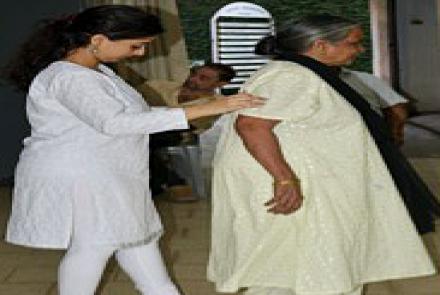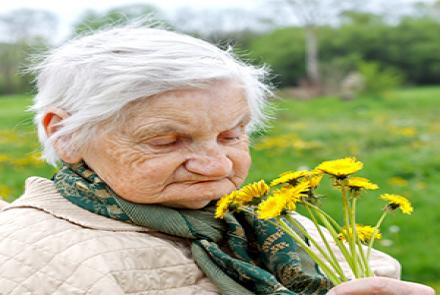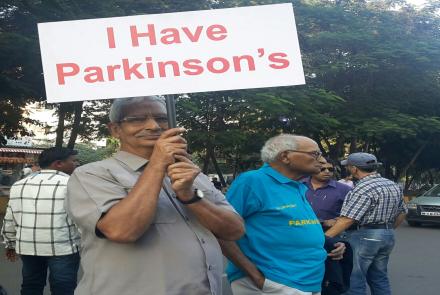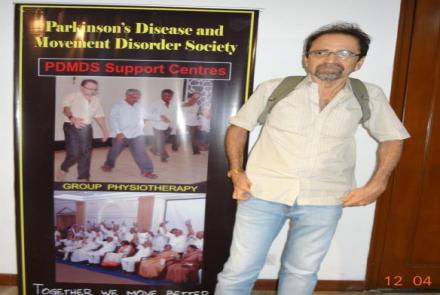
Falls are a common complication of advancing Parkinson's disease. So how can you minimise the risk of falls, be in good shape and lead an active life? Find out here:
It is important that you do not allow a fear of falling to stop you doing things, provided that you are sensible. Keeping active is good for your mobility and independence, and doing the things you like is good for your morale. Try not to let falls curb your activities too much as this can have a negative impact on your quality of life.
The following information and practical suggestions may help you in adapting your daily routine so as to minimise the risk of falls:
Exercise and posture
- Try to exercise daily to keep muscles strong. Muscles need regular physical activity to prevent them from becoming stiff and weak
- Stretching and strengthening exercises can help maintain mobility, which will minimise the likelihood of falling. Tai Chi is particularly beneficial as well as other complementary therapies that help maintain mobility such as yoga, Pilates, hydrotherapy and the Alexander technique.
Equipment and footwear
- Various walking aids are available, but not all are suitable for people with Parkinson’s and some can increase the risk of falls, so it is important to get advice from a physiotherapist or occupational therapist
- Try to avoid unsupportive, floppy shoes - supportive shoes with low heels or flat soles are usually more sensible. A physiotherapist, occupational therapist or podiatrist (depending where you live) will be able to advise on suitable footwear. He or she can also advise on hip pads which help to prevent fractures if you do fall
- Walking aids may help if balance is problem, but they must be the correct height for you. They can also be a hindrance and cause you to trip so it is best to get advice from a physiotherapist.
Hazards in the home
- Minimise clutter so there are fewer obstacles to negotiate when moving around. Position furniture to make your path as easy as possible and keep things in the same place so that your path stays familiar.
- Either avoid loose rugs or ensure that they are securely anchored. Wall-to-wall carpeting is generally safer than rugs, although care should be taken over carpets with a pattern or pile that can be visually misleading. Whilst some patterns can help by providing a visual cue when walking, others can give the impression of a step when there isn’t one. Two different but adjacent carpets can also be confusing visually.
- Remove loose wires or ensure that they are safely tucked away, for example behind furniture close to walls.
- Make sure that there is good lighting, especially on stairs, in halls or around any entrances. You should have a light switch at the top and bottom of any stairs, and a light switch within easy reach of your bed in case you need to get up in the night.
- Stick coloured tape to the edge of steps to make them more visible and less slippery.
- Tape or plastic footsteps may be helpful as ‘stepping stones’ in places where carpet patterns are confusing or where falls are most likely, such as in doorways or on stairs. An occupational therapist or physiotherapist (depending on where you live) will be able to advise on appropriate placing of such visual aids.
- Fit a rail on both sides of the stairs and keep frequently used items in pockets to reduce the number of times you need to climb the stairs.
- Install grab bars and non-slip tape in the bath. Use non-slip mats on the bathroom floor if it is not carpeted. Grab bars may also be helpful near the toilet.
- In the kitchen use non-slip mats on the floor under the sink and cooker and clean any spills immediately.
- Remove or replace swinging doors which may knock you over.
- It may be helpful to have an alarm system installed so that you can call for help if needed. Various types are available - some can be worn as a pendant or bracelet, some clip onto shirts - and at the press of a button you can call for help in an emergency.
- Don’t rush! If the phone or doorbell rings, take your time to answer it.
Tips for walking well
A physiotherapist will be able to advise on any specific problems you have with walking but the following general tips may be helpful, both to you and to your carer or family.
- When walking, concentrate on each step and minimise any distractions. You may need to ask those with you not to talk to you whilst walking.
- Don’t try to do two things at once, such as carrying something, talking on a mobile phone or watching the television as you walk. Your carer or family should be aware of this too so that they know not to distract you.
- Force yourself to swing your arms when walking as this will help your balance.
- Consciously lift your feet and don’t let them drag or shuffle. With each step put your foot back on the ground from heel to toe.
- Try to walk with your feet slightly wider apart and with longer strides as this will help with your centre of gravity.
- Get into an even rhythm when walking. Try counting in your head with each step, singing, stepping over patterns in the floor or simply marching on the spot before setting off. Using a musician’s metronome that provides a regular tick or beat may also help. Make sure you keep an even pace and if you speed up, consciously slow back to a gentle, even pace.
- If you freeze and someone is with you they can help by putting their foot in front of yours for you to carefully step over (raising your foot high off the ground so you do not trip). The stepping motion can trigger walking again and may avoid stumbling and falling. If you are alone, imagine an object in front of you to step over.
- If you need to turn, do so slowly. Do not pivot on the spot as you are more likely to tilt and fall sideways. Instead walk in a wide, semicircle; try imagining that you are walking around the numerals on a clock face. If you want to reverse, do not walk backwards but turn in a u-shape, again using a semi-circular path.
- To change direction, look the way you now want to go, pause and orientate yourself before setting off.
- If you have to carry something, take only small items that will not throw you off balance and try to carry an even load on each side.
Low blood pressure
- If you feel faint on standing up, sit on the edge of your bed or chair for a few minutes before rising. Hold onto something sturdy until you are sure you have your balance, and do not start walking until you feel confident.
Cueing
It is easy to get distracted when walking, and steps may then get progressively smaller until you’re shuffling, or you may freeze on the spot. This tends to happen when trying to turn in tight spaces, pass through doorways or in a crowded space. Cues can be used to help you to concentrate so that it is easier to keep your feet moving at a steady, even pace.
There are various types of cue, all of which use a part of the brain that is not affected by Parkinson’s. Such cues give information about the length and number of steps you take.
Visual cues
- Lines on the ground or on the edges of steps can be useful as they prompt you to step over if freezing is a problem, particularly in doorways.
- Tape across a threshold can help you to focus and step through a doorway. Alternatively concentrating on marching can help.
- Some patterned carpets, and the cracks between tiles or paving stones, can also help to focus your attention on the quality of your walking and to keep the step size regular.
Rhythmical cues
A steady beat from a metronome or suitable music can help. The rhythm should be a comfortable pace, the beat prompting you to lift your feet and step. The pace can be varied according to where you are, for example you will probably walk faster when outside, and slower in your home.
Attentional strategies
You may find it helpful to rehearse certain movements in your mind and focus on the sequence. For example, concentrating on putting your heel down firmly on the ground as your foot makes contact will help you to step evenly. Imagining a line to step over may help you to negotiate narrow entrances. Attentional strategies require concentration though which can be difficult if there are external distractions.
(This information about falls was generously supplied by the European Parkinson's Disease Association)

